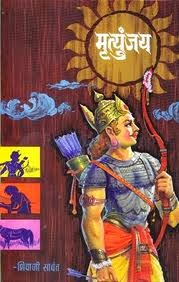Deccan Queen Turns 83
 |
| The legendary Deccan Queen negotiating a curve Pic courtesy: Deepesh Soni |
 |
| The ad for the Deccan Queen in 1930 |
The Deccan Queen has several firsts or 'among the firsts' to her credit. A few being that she was India's first superfast train, she was the first long distance train to be hauled by an electric locomotive. She was also one of the first trains to be connected through vestibules. The Deccan Queen is a symbol of pride for the both the GIPR as well as CR since it was also the first train to have exclusive compartments marked for ladies and also among the first to have a dining car. It is also the only train to have been featured in the 1988 iconic "Mile Sur Mera Tumhara" video for national integration. On 7th May 2010, she was also the first train to be banked by three WAG7 electric locomotives when the traction power on the Karjat--Lonavla stretch was changed to 25,000 volts Alternating Current from the earlier 1500 Volts Direct Current. These series of firsts make it an exciting train with a long chequered history. It was the first train in which passengers could carry dogs along and the royals used the train to transport officials to Pune for races while the common man used the train to commute between the cities.
The Deccan Queen is the only train in India presently to have a Dining Car. The Dining Car offers table services for 32 passengers and has modern pantry facilities such as a microwave oven, deep freezer and a toaster. The Dining Car is tastefully furnished with cushioned chairs and carpets. The Dining Car had been fitted with grills, steam ovens, boilers and was one of the few trains to be introduced by the GIPR with an electric refrigerator to stack cold beverages when it was first introduced. Apart from the usual vadas, cutlets, patties, soup and fries, the Dining Car staff serves even cheese toasts, baked beans and scrambled eggs, food items which are unique only to the Deccan Queen.
 |
| The name plate of the Deccan Queen Express |
From its inception, apart from providing high standards of comfort to passengers, the train has witnessed various improvements such as the introduction of coaches with roller bearings for the first time in India, replacement of end generating coaches to self-generating compartments with 110 volts systems and the introduction of first and second class chair cars thereby providing increased accommodation to passengers.
The Deccan Queen is an incongruous part of the history between Mumbai and Pune. The story is inextricably linked with speed and luxury during the pre-independence days. The management systems of the Deccan Queen have been assessed by the International Services Ltd. and were found to comply with their requirements of ISO 9001:2000 under the Joint Accreditation System of Australia and New Zealand in November 2003, thereby making it the first Indian train to find a place in the Limca Book of Records.


Comments